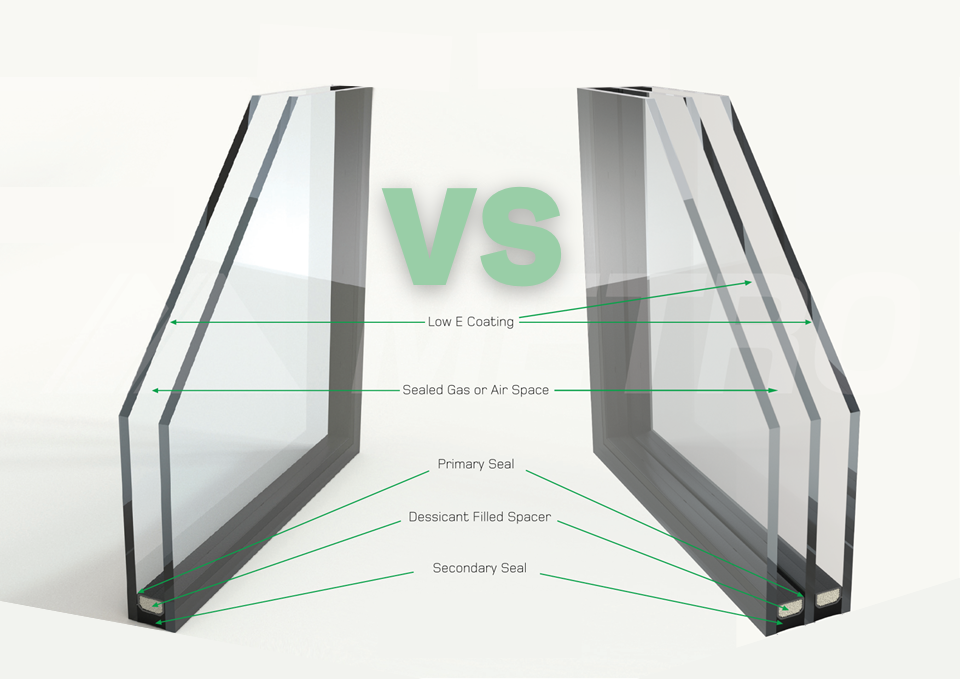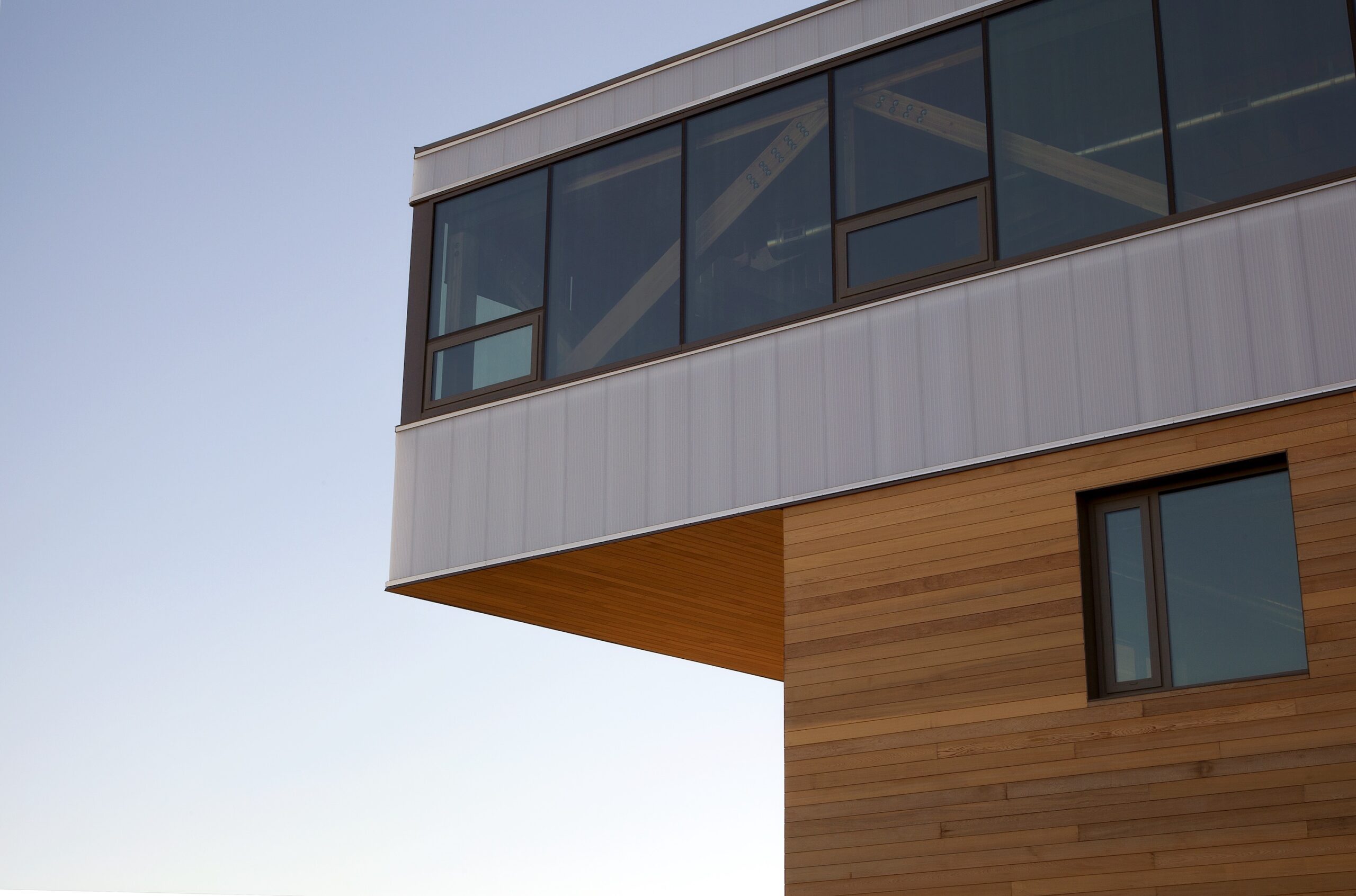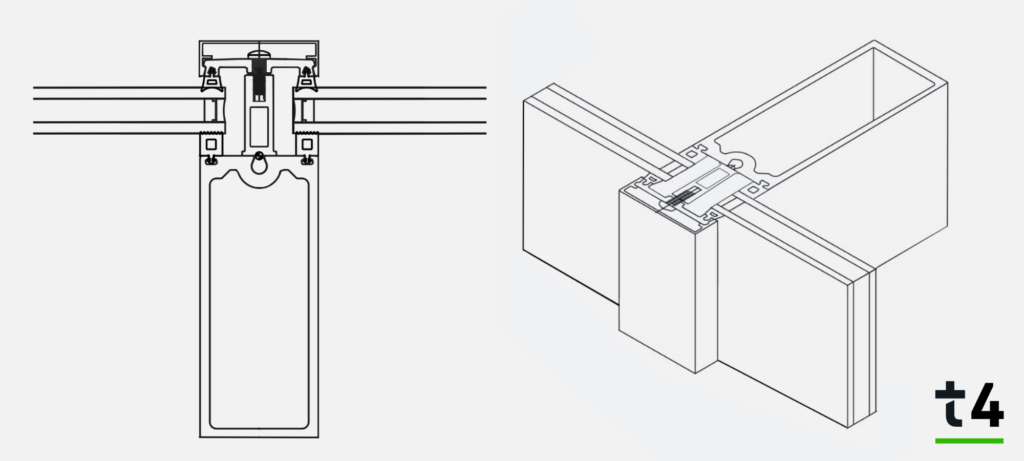Thermaframe 4: The Double-Glazed Solution for Low-Carbon Buildings
July 9, 2024

In the ever-evolving landscape of design and construction, the choice between double- or triple-glazing for windows and curtain wall is about more than just another 6mm lite of glass; it’s a nuanced decision with far-reaching implications for sustainability as well as the long-term performance of new buildings.
As leaders in innovation and sustainability, GlasCurtain recognizes that there’s no universal solution for every project in the world, and one of the most important things we can do is align glazing solutions with local climates to optimize energy demands, maximize occupant comfort, and ensure long-term building performance.
With that in mind, let’s take this opportunity to explore some of the critical factors that architects, engineers, and clients would do well to consider when choosing the best glazing system for their next project, and why double-glazing with fibreglass-framing is worth considering!

In Context: Double vs Triple
The debate between double- vs triple-glazing is complex! Influenced by myriad factors including sustainability goals, costs, acoustics, geography, weather trends, and more. While triple-glazed insulated glass units (IGUs) are standard in cold climates today, double-glazed IGUs have been the norm throughout most of North America since the 1970s when they replaced single-glazing. But it’s not just the number of lites that’s been increasing in the last few decades, new innovations in Argon-filled air spaces, Low-E coatings, and warm-edge spacers have also had a dramatic impact on the overall performance characteristics of modern IGUs. So what’s the right IGU make-up for your next project?
There are several factors to consider:
- Sustainability Goals: As architectural decisions increasingly factor in carbon impacts, the environmental footprint of glazing choices becomes a critical consideration. Double-glazing, with its lower upfront (ie. embodied) carbon impact, often makes the most sense in more temperate climate zones, especially when paired with low-carbon fibreglass framing. Of course in colder climates, or in buildings with higher window-to-wall ratios aiming to achieve Passive House, Net-Zero, or LEED certification, triple-glazing’s higher upfront environmental impact is readily offset with long-term lower operational impacts
- Geography / Climate: A building’s geographic location, orientation, and intended use significantly influence glazing choices. Double-glazing is often sufficient in more temperate climates or in geographies where solar heat gain is the priority, whereas triple-glazing is indispensable in colder regions where R-values / U-values are the priority, and for buildings where noise reduction is a key considerations
- Cost Considerations: While double-glazing promises lower initial costs, triple-glazing offers many projects long-term savings. A comprehensive cost-benefit analysis, weighing both upfront and ongoing expenses, is important when developing product specifications
As we can see, the choice between double- and triple-glazing is far from automatic! It involves holistic consideration that aligns the building’s design and function within its environmental context – balancing upfront costs against long-term benefits – to ultimately make choices that support sustainability and cost-effectiveness. By better understanding these critical factors, we can all make more informed decisions that enhance the performance and sustainability of our buildings for generations to come.

Introducing Thermaframe 4!
As we navigate the complexities of choosing between double- vs triple-glazing for different climate zones, it’s clear that both solutions have their role to play in the industry. As such, while GlasCurtain has focused since Day 1 on developing the highest thermally performing curtain walls in the world with our triple-glazed fibreglass-framed systems, we now see a growing demand for double-glazed solutions in more temperate climates, particularly for buildings targeting Net-Zero and Zero-Carbon certification.
So after more than one year of R&D, we’re thrilled to announce the latest addition to the Thermaframe family: Thermaframe 4. This next-generation solution is our first double-glazed system, and is still designed and engineered to the same industry-leading standards that architects have come to expect from GlasCurtain.
With effectively the same thermal performance (R4) as triple-glazed Kawneer 1600, our double-glazed fibreglass-framed Thermaframe 4 system offers the same operational benefits with 40% less upfront (embodied) carbon. Thermaframe 4 is therefore ideal for projects with ambitious sustainability goals such as Net-Zero, Zero-Carbon, or LEED because it leverages the same award-winning benefits of condensation resistance, durability, and all-domestic supply chain that all Thermaframe fibreglass-framed systems are so widely recognized for.

Why Double-Glazing?
- Optimized for Temperate Climates: Thermaframe 4 strikes the ideal balance between thermal performance and cost-effectiveness, making it ideal for more temperate regions that don’t need triple-glazing
- Low-Carbon: With 50% less upfront (embodied) carbon than aluminum-framed systems, Thermaframe 4 supports carbon reduction initiatives that make a difference today
- Versatile Applications: For commercial, institutional, or multi-family projects, Thermaframe 4 meets the most stringent requirements for performance, durability, and sustainability
Are you working on a low-carbon project that needs Thermaframe 4?

